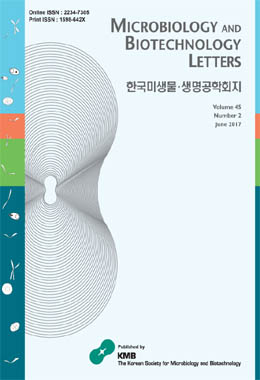1. Agar diffusion test를 통해 지모 뿌리 추출물의 항균활성 확인 결과 호기성 그람 양성 균주인 S. aureus에서 추출물 및 모든 분획물에서 저해환을 나타내었고, 에틸아세테이트 분획물이 대조군으로 사용된 메틸파라벤보다 더 높은 항균활성을 나타내었다.
2. 최소저해농도(MIC)와 최소사멸농도(MBC/MFC)를 통해 더 정확한 지모 뿌리 추출물의 항균활성을 확인하고자 하였다. 그 결과 곰팡이균인 A. niger를 제외한 모든 균주에서 MIC 농도를 확인하였고, 특히 호기성 그람 양성 균주인 S. aureus와 호기성 그람 음성 균주인 P. aeruginosa 그리고 진균인 C. albicans에서 에틸아세테이트 분획과 아글리콘 분획물이 낮은 농도에서 각 균주를 저해하는 것을 확인하였다.
3. DPPH법을 통해 지모 뿌리 추출물의 자유 라디칼 소거활성(FSC50)을 확인한 결과 가장 높은 활성을 나타낸 것은 에틸아세테이트 분획물(23.19 μg/ml)이고 아글리콘 분획물(71.06 μg/ml), 50% 에탄올 추출물(146.2 μg/ml) 순서로 나타났다.
4. 지모 뿌리 추출물의 총 항산화능(OSC50)을 확인하기 위해 luminol 발광법을 통해 확인하였다. 실험 결과 에틸아세테이트 분획물(1.5 μg/ml)과 아글리콘 분획물(1.4 μg/ml)이 대조군으로 사용된 L-ascorbic acid (1.3 μg/ml)과 비슷한 활성을 나타내며 높은 총 항산화능을 나타내었다. 또한 에틸아세테이트 분획물이 50% 에탄올 추출물보다 약 11배 더 높은 활성을 띄는 것을 확인하였다.
5. 1O2으로 유도된 세포 파괴에 대한 세포보호 효과(τ50)를 확인한 결과 지모 뿌리 추출물과 분획물 모두 농도의존적으로 세포보호효과를 나타내었다. 50% 에탄올 추출물은 8 μg/ml의 농도(34.5 min)에서, 에틸아세테이트 분획물은 4 μg/ml의 농도(64.4 min)에서, 아글리콘 분획물은 8 μg/ml의 농도(215.9 min)에서 가장 높은 보호효과를 나타냄을 확인하였다.
6. 지모 뿌리 추출물의 HaCaT 세포독성평가를 진행한 결과, 본 실험에서는 0.02-2 μg/ml로 농도를 설정하여 세포보호실험을 진행하였다.
7. 과산화수소로 유도된 세포 손상에 대한 세포 보호 효과를 확인한 결과, 50% 에탄올 추출물과 에틸아세테이트 분획물 및 아글리콘 분획물의 최대 생존율은 각각 86.23, 86.59및 89.70%를 나타냈으며 과산화수소를 처리한 양성 대조군에 비하여 세포 생존율을 각각 8.07, 8.42 및 11.53% 증가시켰다.
8. HaCaT세포에 UVB를 조사하여 세포 내 ROS 소거활성평가를 진행한 결과, 자외선으로 유도된 세포 손상에서 아글리콘 분획물은 2 μg/ml 농도에서 UVB를 처리한 양성 대조군 대비 41.77%까지 세포내 ROS를 감소시켰다.
9. 실험을 통해 높은 생리활성을 나타낸 지모 뿌리 에틸아세테이트 분획물을 TLC 및 LS/ESI-MS를 통해 성분분석을 진행하였다. 그 결과 mangiferin, isomangiferin, timosaponin-A-III, nyasol을 확인하였다.
본 연구의 결과를 통해 지모 뿌리 추출물의 항균 및 항산화 작용과 더불어 세포보호효과를 통해 천연 화장품 소재로서의 응용 가능성이 있음을 확인하였다.
Extracts and fractions of Anemarrhena asphodeloides Bunge were prepared and their physiological activities and components were analyzed. Antimicrobial activities of the ethyl acetate and aglycone fractions were 78 μg/ml and 31 μg/ml, respectively, for Staphylococcus aureus and 156 μg/ml and 125 μg/ml, respectively, for Pseudomonas aeruginosa. 1,1-Diphenyl-2-picrylhydrazyl free radical scavenging activities (FSC50) of 50% ethanol extract, ethyl acetate fraction, and aglycone fraction of A. asphodeloides extracts were 146.2 μg/ml, 23.19 μg/ml, and 71.06 μg/ml, respectively. The total antioxidant capacity (OSC50) in an Fe3+-EDTA/hydrogen peroxide (H2O2) system were 17.5 μg/ml, 1.5 μg/ml, and 1.4 μg/ml, respectively. The cytoprotective effect (τ50) in 1O2-induced erythrocyte hemolysis was 181 min with 4 μg/ml of the aglycone fraction. The τ50 of the aglycone fraction was approximately 4-times higher than that of (+)-α-tocopherol (τ50, 41 min). Analysis of H2O2-induced damage of HaCaT cells revealed that the maximum cell viabilities for the 50% ethanol extract, ethyl acetate fraction, and aglycone fraction were 86.23%, 86.59%, and 89.70%, respectively. The aglycone fraction increased cell viability up to 11.53% at 1 μg/ml compared to the positive control treated with H2O2. Analysis of ultraviolet B radiation-induced HaCaT cell damage revealed up to 41.77% decreased intracellular reactive oxygen species in the 2 μg/ml aglycone fraction compared with the positive control treated with ultraviolet B radiation. The findings suggest that the extracts and fractions of A. asphodeloides Bunge have potential applications in the field of cosmetics as natural preservatives and antioxidants.


